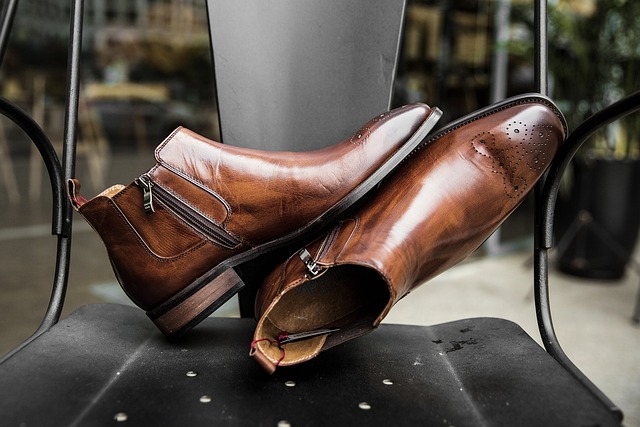Exploring the Unique Qualities of Russian Leather Shoes
The footwear was made of various kinds of leather. The most basic shoes worn by farmers and artisans were made from thick thick cowhide.
The Novgorod culture layer dating back to the 11th to 13th century has symmetrical shoes with a narrow heel. They also found shoes that have patterns, such as curly or parallel lines.
Shoe Craftsmanship
Archeologists have discovered a variety of pairs (laptiof footwear with various ornaments during the excavation of medieval-era villages in the north-east of Russia. Embellishment and leather stamping were the most popular. Peasants wore the shoes on a daily basis. They were constructed by a lacing that tightened around the ankle and the sole was sewn on.
To make one lapti, one requires seven pieces of bast each of which is two meters long. To make these strips, it was required to strip the bark off the entire tree of the linden, without imperfections. The early Russians employed this metaphor to stripe as if the bark of a tree.
Different regions have their individual methods to make lapti. Moscow’s lapti are tall and pointed, while those from the Northern regions are pointed and low. Two layers of bast are used to create winter lapti.
The shoemakers from Novgorod began to embellish their shoes in the 12th century using the carving of leather and woolen thread. The patterns included a range of of triangles, crosses, and the zigzags.
Leather Shoe Manufacturing
The literature has not paid much focus on the craft of making shoes in the medieval period of Novgorod. It is possible that the lack of archeological evidence that we have to study this topic has contributed to the absence of interest.
All kinds of shoes were discovered all kinds of shoes were found on Novgorod archaeological sites. They are from the 10th to 14th centuries. The most basic, simple shoes were made from thick dense leather, and were designed for a variety of individuals (artisans as well as farmers). For openwork-embroidered shoes, lighter and softer leathers were utilized.
The giay luoi nam cao cap designs were made using the techniques of leather carving or embroidery. They included curly designs and rows of parallel or cross-over lines, as well as floral patterns. The most well-known openwork design was a pair of stylized flowers.
The shoes were also embellished with other ornaments like a pair of eyes, a ribbon, bow, for instance. The soles were sewn on to the shoe to safeguard the feet.
According to INE data, the production output in Russia was up in May 2022 when compared to the same month in 2017. The footwear and leather industries were among those that witnessed an increase in production. The need for safety footwear was the primary driver behind the growth. The Russian company Vostok Serviceproduces safety footwear at two production facilities: Torzhok Shoes Factory>>> ZAO in Torzhok (Tver Region) and WorkingStyle>> OOO in Uzlovaya (Tula Region). Vostok-Service is a licensed distributor of Desma, a German Desma brand. Desma.

Traditional Techniques
The 12th century was Novgorod was an important shoe-making hub. Through the layers of the time of this there were a variety of shoes like Bog shoes (lapti) and ankle boots, and shoes with high sides that reached the ankle (porshni) were found. The shoes of all kinds were made of the linden bark, birch bark or oak bark, as well as the elm. The bark was shaved and then cut into strips for weaving.
The saddle stitch, also known as the hidden stitch was employed to join the leather pieces, based on whether they were placed close to each other or in a row. Butt seams were utilized to connect the top leather piece to the lower piece, when it was abutting the two pieces. tachnyi shov, tachnyj shov].
Burki (feather-and-felt boots) constructed from white felt were another type of winter-wear. These were worn by the upper class of individuals, such as Party commanders, military leaders Generals, officials from the government and military.
The 14th century was when basic, openwork footwear was replaced with knee-high boots. They had narrow heels, tiny holes to allow laces to be threaded and holes or cuts in the bootlegs, where leather straps could be laced. The cultural layer of Novgorod includes these kinds of shoes. They were tied at the ankle using lacing of leather.
Modern Innovation
VV: The culture of sneakers is fairly recent in Russia. I believe it’s growing and the market is expanding. In the 1990s, just few people in Moscow and Saint Petersburg could afford to purchase foreign brands.
The Russian footwear industry is trying to adapt the latest trends and technologies through incorporating them into its manufacturing processes. Obuv Rossii, for example has developed an automated process to make flip-flops and clogs using EVA technology. It is based on solid. This is one of the most sophisticated techniques in the area.
The use of innovative materials is also being evaluated by shoemakers. They are also implementing the most recent IT methods to boost the number of customers who are omnichannel and to increase customer loyalty by offering a variety of other services.
The company plans to launch and create new footwear collections for children and women. The shoes will be accompanied by shoes, bags that match as well as shoe care products and socks. These features are expected to boost sales, increase the complexity of purchases, and increase the loyalty of customers.
